Jackson Pollock is a major art figure born in 1912 in Wyoming. You’re probably familiar with his signature drip style painting, but you might not know how he got his inspiration….
In the beginning his work wasn’t abstract. Like many other unemployed artists, he enlisted in the Federal Art Project and was encouraged by the United States government to paint murals showing American life.
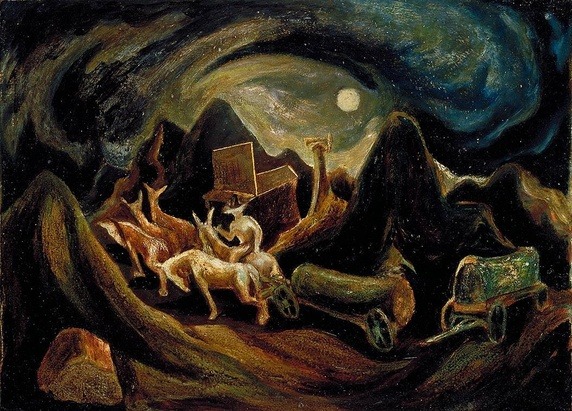
It was during this time that he moved to NYC to study at the Art Students League of New York. His style mimicked his teacher Thomas Hart Benton (below).
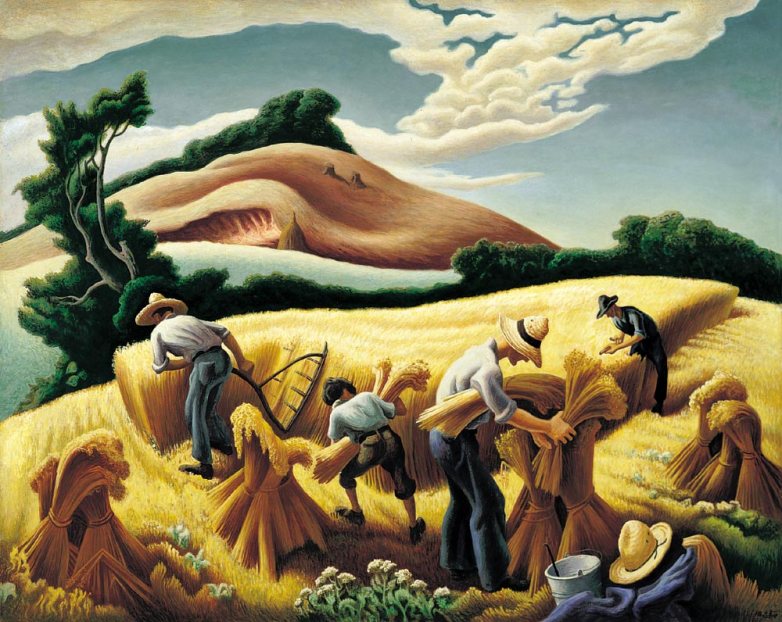
In 1941, the Museum of Modern Art in New York City held an exhibition entitled Indian Art of the United States showcasing contemporary indigenous artwork. The museum also invited a few Native American artists to actually demonstrate their process.
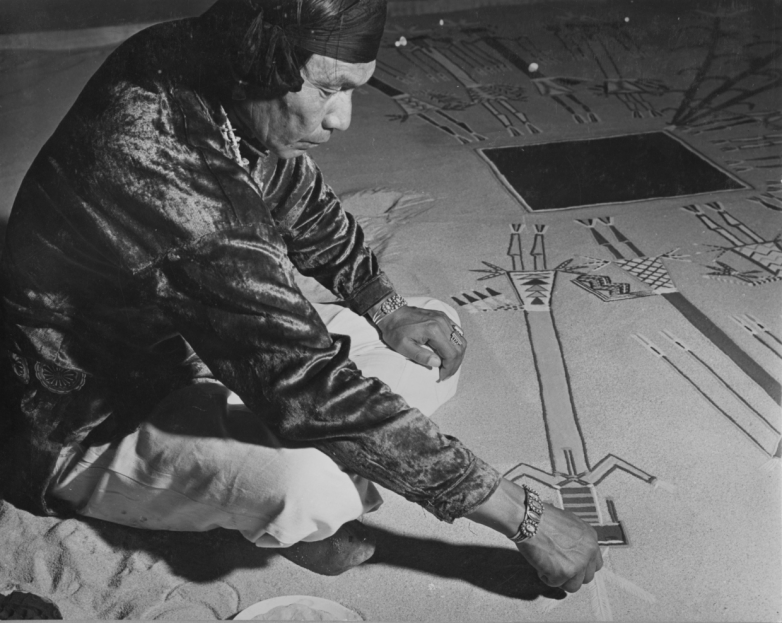
Upon visiting that exhibition Pollock was inspired by the technique of Navajo sand painters and began crafting his own.
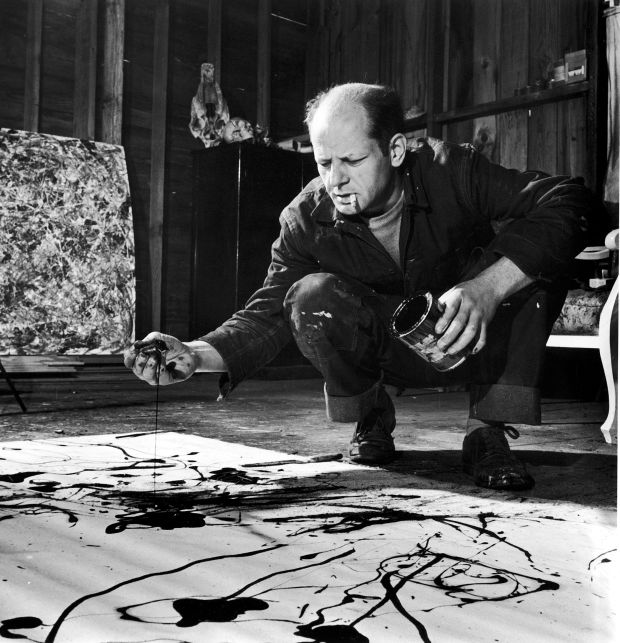
Although he never directly addressed his Native American influences, it can definitely be seen in his early abstracted works. Spot the Kokopelli in the top center?
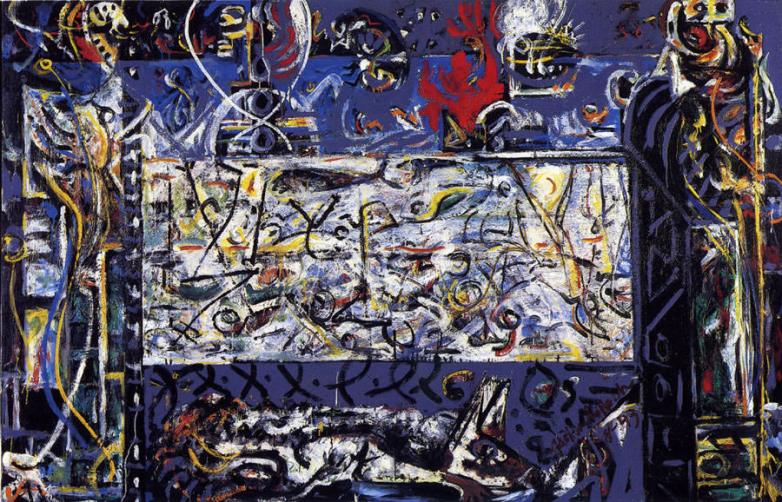
In the art world, the movement he pioneered is called Abstract Expressionism. Before this art movement, Paris was considered to be the art capital of the world. Once the United States began to celebrate this movement, New York City gained prominence in the art world.
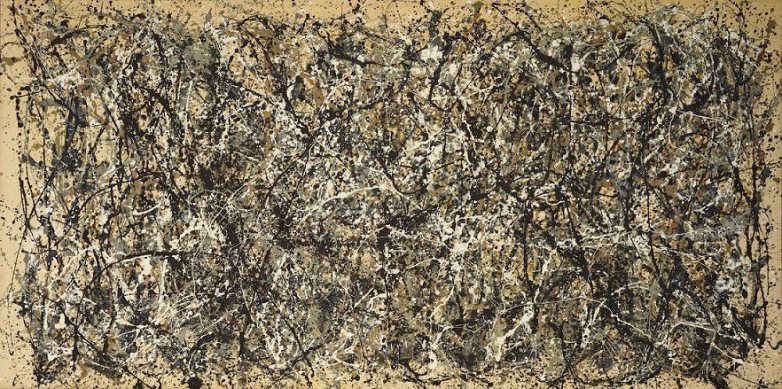
Pollock’s art is important in contemporary art history because it was so radically different from everything that was being made by other artists of the time. Famous formalist critic Clement Greenberg championed the movement because he was fascinated by his creation process and his painting’s formal qualities.
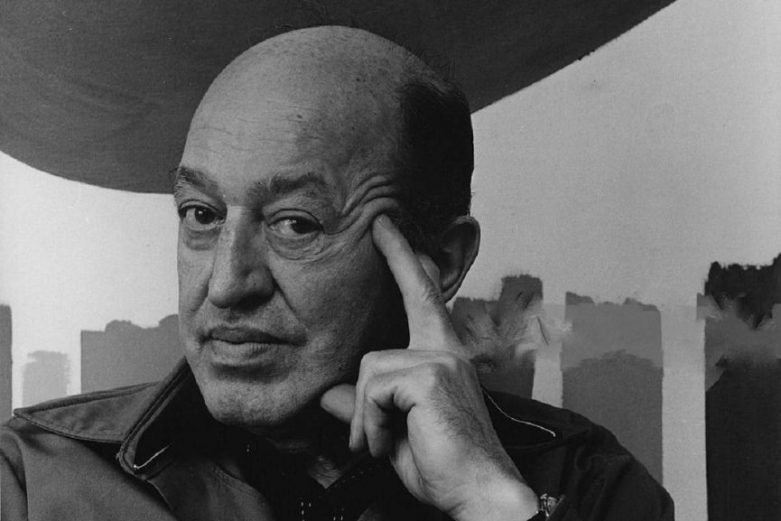
What do you think about this?
Suggested: Pollock One: Number 31, 1950 by Charles Stucky for the MoMA


Interesting. Did he ever comment on the connection?
LikeLiked by 1 person
To the best of my knowledge, he didn’t comment on it directly.
LikeLiked by 1 person
It’s a shame. It would be interesting to see the thought process.
LikeLike